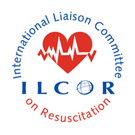
BLS
- ILCOR suggests performing chest compressions on a firm surface when this is practical and does not significantly delay the start of chest compressions (weak recommendation, very low–certainty evidence).
- ILCOR suggest activation of the CPR mode to increase mattress stiffness if available for in-hospital cardiac arrest (good practice statement)
- ILCOR suggest EMS implementing dispatcher-assisted public-access AED systems should monitor and evaluate the effectiveness of their system (good practice statement).
- ILCOR suggest the use of real-time audiovisual feedback and prompt devices during CPR in clinical practice as part of a comprehensive quality improvement program for cardiac arrest designed to ensure high-quality CPR delivery and resuscitation care across resuscitation system (weak recommendation, very low–certainty evidence).
ACLS
Oxygen Targets
- ILCOR recommend the use of 100% inspired oxygen until the arterial oxygen saturation or the partial pressure of arterial oxygen can be measured reliably in adults with ROSC after cardiac arrest in the prehospital setting (strong recommendation, moderate-certainty evidence) and in-hospital setting (strong recommendation, low-certainty evidence).
- Following reliable measurement of arterial oxygen values, ILCOR suggest targeting an oxygen saturation of 94% to 98% or a partial pressure of arterial oxygen of 75 to 100 mm Hg (≈10–13 kPa) in adults with ROSC after cardiac arrest in any setting (good practice statement).
- ILCOR recommend avoiding hypoxemia in adults with ROSC after cardiac arrest in any setting (strong recommendation, very low–certainty evidence).
Blood Pressure
- There is insufficient scientific evidence to recommend a specific blood pressure goal after cardiac arrest. Therefore, we suggest a mean arterial blood pressure of at least 60 to 65 mm Hg in patients after out-of hospital (moderate-certainty to low-certainty evidence) and IHCA (lowcertainty to very low–certainty evidence).
Temperature Control
- ILCOR suggest actively preventing fever by targeting a temperature ≤37.5 ◦C for patients who remain comatose after ROSC from cardiac arrest (weak recommendation, low-certainty evidence). Whether subpopulations of cardiac arrest patients may benefit from targeting hypothermia at 32 ◦C to 34 ◦C remains uncertain.
- Comatose patients with mild hypothermia after ROSC should not be actively warmed to achieve normothermia (good practice statement).
- ILCOR recommend against the routine use of prehospital cooling with rapid infusion of large volumes of cold intravenous fluid immediately after ROSC (strong recommendation, moderate-certainty evidence).
- ILCOR suggest surface or endovascular temperature control techniques when temperature control is used in comatose patients after ROSC (weak recommendation, low-certainty evidence).
- When a cooling device is used, we suggest using a temperature control device that includes a feedback system based on continuous temperature monitoring to maintain the target temperature (good practice statement).
Seizure Prophylaxis
- ILCOR suggest against the use of prophylactic antiseizure medication in post–cardiac arrest adults (weak recommendation, very low–certainty evidence).
- ILCOR suggest treatment of clinically apparent and electrographic (EEG) seizures in post–cardiac arrest adults (good practice statement).
- ILCOR suggest treatment of rhythmic and periodic EEG patterns that are on the ictal-interictal continuum in comatose post–cardiac arrest adults (weak recommendation, low-certainty evidence).
ECPR
- ILCOR suggest that ECPR may be considered as a rescue therapy for selected adults with out-of-hospital or in hospital cardiac arrest when conventional cardiopulmonary resuscitation is failing to restore spontaneous circulation in settings where this can be implemented (weak recommendation, low-certainty evidence).
Pregnancy
- ILCOR suggest delivery of the fetus by perimortem cesarean delivery for women in cardiac arrest in the second half of pregnancy (weak recommendation, very low–certainty evidence).There is insufficient evidence to define a specific time interval by which delivery should begin.There is insufficient evidence to make a recommendation about the use of left-lateral tilt or uterine displacement during CPR in the pregnant patient.
- ECPR may be considered as a rescue therapy for selected cardiac arrest patients during pregnancy or in the postpartum period when conventional CPR fails and in settings in which it can be implemented(good practice statement).
Difficult Airway
- In adults in cardiac arrest, when standard airway management strategies (eg, oropharyngeal airway and bag-mask, supraglottic airway, or tracheal tube) have failed, it is reasonable for appropriately trained rescuers to attempt front-of-neck airway access using a cricothyroidotomy technique (good practice statement).
Reference
- 2024 International Consensus on Cardiopulmonary Resuscitation and Emergency Cardiovascular Care Science With Treatment Recommendations: Summary From the Basic Life Support; Advanced Life Support; Pediatric Life Support; Neonatal Life Support; Education, Implementation, and Teams; and First Aid Task Forceshttps://www.ahajournals.org/doi/10.1161/CIR.0000000000001288